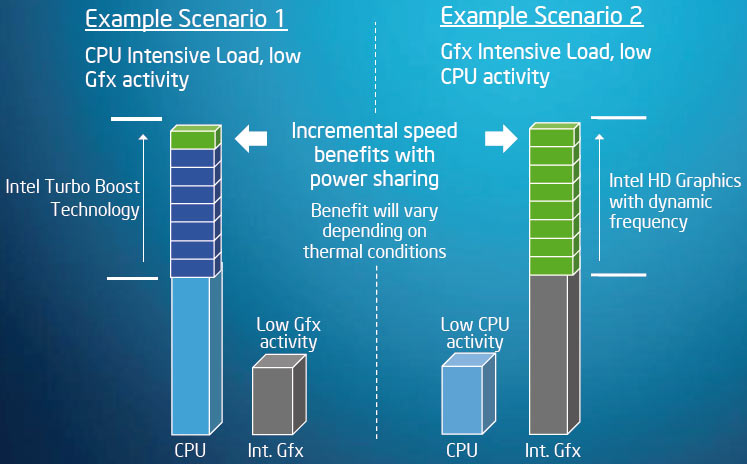Clarkdale's Efficiency: Core i5-661 Versus Core 2, Athlon II, And Phenom II
Intel’s Clarkdale Processors
The new processors are available for desktops (Clarkdale) and mobile PCs (Arrandale). However, in this article we will only be talking about desktop solutions.
There are three major changes from the prior generation. First, Intel transitioned from the 45nm to 32nm CMOS process. Secondly, all new Core i5 and Core i3 processors have two processing cores, unlike the existing Core i5 and i7 processors, which are all quad-core designs. The dual-core offerings are designed to bring the LGA 1156 platform down to mainstream price points. Lastly, all Core i5 and i3 processors with two cores come with Intel’s integrated HD Graphics. You may use the CPUs with an H55, H57, or Q57 motherboard, or you can opt for discrete graphics, dropping the chips into P55 systems.
Another Dual-Die Processor
According to Olaf Höhne, client marketing manager for Intel and spokesperson at Intel’s 2010 Core processor presentation in Germany, the 32nm CPU was originally intended to be a 45nm part. Thanks to fast advances on the new manufacturing technology, Intel obviously decided to push up the new process technology. Intel first had its Pentium D (Presler) CPU combine two separate silicon dies within a single chip. The company did the same with the quad-core Kentsfield (65nm) and Yorkfield (45nm). While many people criticized the Core 2 Quad for not being a “native” monolithic quad-core, the results were still competitive, to say the least. Intel typically prefers economic decisions over popular ones.
The TDP Game
Intelligent Power Sharing allows both the processor and the graphics core to utilize the thermal envelope as much as necessary.
Graphics and processor together add up to a total Thermal Design Power (TDP) that can be dynamically adjusted. Once again, Intel implemented its Turbo Boost technology to allow the processor to accelerate the clock speed by several bins. This load-dependant clock selection is technically also available for the graphics unit, but Intel decided to only activate HD Graphics with dynamic frequency for its mobile platforms. Although the decision makes sense from a positioning standpoint, this would have been a nice addition for desktop platforms. Turbo Boost works on all of the Core i5 dual-core models, but it’s not available on the Core i3 series. Hyper-Threading, which provides two virtual cores per physical core to the operating system, is available on all Core i5 and i3 processors, but not the latest Pentium G6950.
Get Tom's Hardware's best news and in-depth reviews, straight to your inbox.
Core i3/i5 Processor Models
| Processor | Base Clock | Turbo Boost | Cores / Threads | L3 Cache | Graphics | Memory Support | TDP | Initial 1Ku Pricing |
|---|---|---|---|---|---|---|---|---|
| Core i5-670 | 3.46 GHz | 3.73 GHz | 2/4 | 4MB | 733 MHz | DDR3-1333 | 73W | $284 |
| Core i5-661 | 3.33 GHz | 3.60 GHz | 2/4 | 4MB | 900 MHz | DDR3-1333 | 87W | $196 |
| Core i5-660 | 3.33 GHz | 3.60 GHz | 2/4 | 4MB | 733 MHz | DDR3-1333 | 73W | $196 |
| Core i5-650 | 3.20 GHz | 3.46 GHz | 2/4 | 4MB | 733 MHz | DDR3-1333 | 73W | $176 |
| Core i3-540 | 3.06 GHz | - | 2/4 | 4MB | 733 MHz | DDR3-1333 | 73W | $133 |
| Core i3-530 | 2.93 GHz | - | 2/4 | 4MB | 733 MHz | DDR3-1333 | 73W | $113 |
Although Pentium-class 32nm processors will cover the low-end, the minimum speed for Core i3/i5 is as high 2.93 GHz—significantly more than before, and more than enough for everyday applications. Core i5 processors with Turbo Boost can speed up to 3.46, 3.6, and 3.73 GHz, depending on the processor model.
Current page: Intel’s Clarkdale Processors
Prev Page Clarkdale Efficiency Analyzed Next Page Intel's Core i5-661 (Clarkdale) CPU
